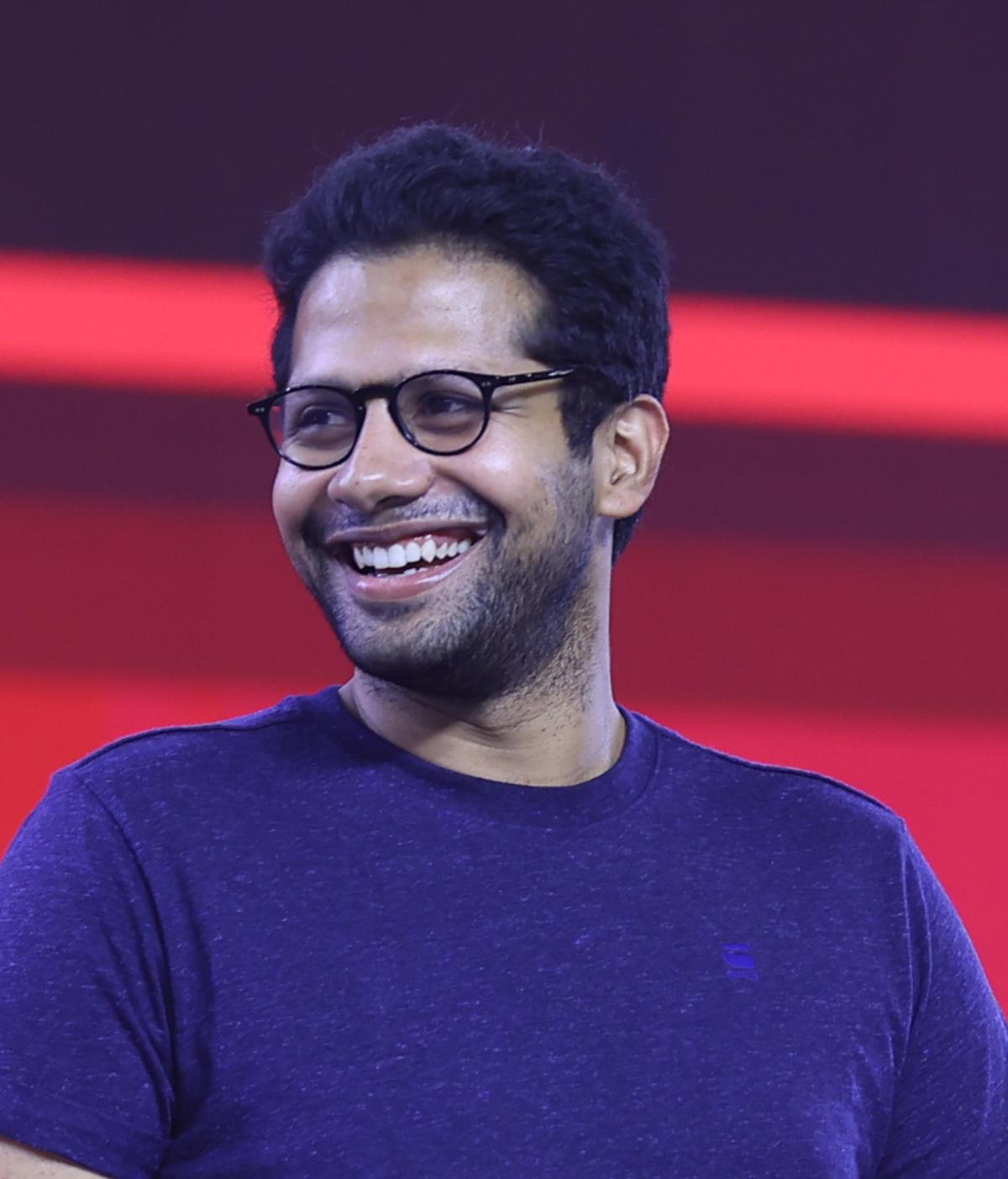Tamil-Telugu bilingual films are here to stay.
As two of the most interconnected film industries in the country, cross-collaborations have been happening even before the dawn of our independence. 1931 was when Indian cinema’s first sound filmAlam Ara was released, and the same year, Kalidaswas also made. Not only was it the first sound film to be made in a language from south India, but it was also the first Tamil-Telugu bilingual and India’s first multilingual sound film.
Such collaborations peaked after the independence, predominantly in the 50s when films like Missiamma/Missamma (1955), Tenali Raman/Tenali Ramakrishna (1956) and Mayabazar (1957) were made. The trend later saw a steady decline towards the end of the century while there were some remarkable collaborations in the early 80s followed by a handful of films. Then, Baahubalibroke the glass ceiling.
But it is over the last two years that there has been an influx of bilinguals featuring a filmmaker from one industry and lead actor from the other. While titles like Vaathi/Sir, Prince and Varisu/Vaarasudu featured Tamil stars helmed by Telugu directors, Tamil filmmakers directed Telugu heroes in films like Kanam/Oke Oka Jeevitham, The Warriorrand Custody.
With films likeGame Changer, Rainbow, Dhanush’s film with Sekhar Kammula being in production right now and more such collaborations expected to be announced, here’s a deep dive into what makes such associations unique.
A convergence of cultures
“A film will basically do well if the content is good. Be it yesteryear films like Shiva/Udhayam or ones like Baahubali and Arundhati. Whenever the content is compelling, people enjoy it. We’ve always had female leads from all the southern regional industries working in different languages, including Hindi. It was the male stars who stuck to their own language, except for Kamal Haasan, who has starred in multiple multilingual films,” says veteran Telugu producer D Suresh Babu, who produced the recent Tamil film Prince.

Producer Suresh Babu
| Photo Credit:
@sureshproductions/Instagram
“When something isn’t delivered by the local talents and another actor from outside their industry comes in to deliver that, the local audience has always been receptive to it,” adds the producer who cites an earlier example. “More than 50 years ago, we had a film like Vasantha Maligai, which was directed by a Telugu filmmaker (KS Prakash Rao), bankrolled by a Telugu producer (D Ramanaidu, Suresh Babu’s father) and starred a Telugu actress, Vanisri. So bilingual films have always been made, but they are getting noticed these days because of the media.”
Filmmaker Venky Atluri, whose latest film Vaathi/Sir is also his first bilingual, however, believes there has been a resurgence of the bilingual trend. “Earlier, the accessibility for such collaborations wasn’t there; there wasn’t a way to approach actors. It was easier until the 80s because all the studios were in Chennai. But when the industries moved to their respective states, this accessibility slowly got reduced.”
One of the first filmmakers to try their hand at a Tamil-Telugu bilingual film before the start of the recent wave was Tamil director Ashwin Saravanan, who teamed up with Taapsee Pannu for Game Over(2019). For Ashwin, the reason to do a bilingual was born out of necessity. “The intention at that point in time was to make an Indian film; a film that can be watched by everyone from the country,” says the director, who adds that Taapsee coming on board gave them the space to explore multiple languages along with the experience of its production banner YNOT Studios which had earlier bankrolled Vaayai Moodi Pesavum/Samsaaram Aarogyathinu Haanikaram.
Ashwin adds, “I feel a lot of great films from the south get overlooked by those in the north, and the dynamics changed only after the pandemic when many got introduced to Malayalam films, and streaming platforms made them more accessible.”
The effect of streaming
The rise of streaming seems to be an indisputable reason for the bilingual film trend. “Content has become common for the whole of India thanks to OTT platforms. Without considering language as a barrier, audiences are searching for that particular week’s best films and watching them,” says Tamil producer SR Prabhu, whose banner bankrolled Kanam/Oke Oka Jeevitham.

Director Venky Atluri
Venky agrees, adding, “Now, people have started watching all the stars’ films on OTT platforms; Dhanush’s Karnan and Asuran were watched by many in my state and they feel like he’s one of them. Similarly, when a producer or director sees a potential market, it gives us the confidence to make a film with an actor from a different language.”
Disparate collaborations
Actor Ritu Varma, who starred in Kanam/Oke Oka Jeevitham, believes that the bridge between multiple industries is only going to narrow further. “There’s a lot of exchange of stories and talents that are happening. The advantage of working in two industries is your exposure increases as your audience base expands. When viewers from a different state accept you, it gives actors a sense of belonging. It also motivates you to work harder and entertain the audience,” says Ritu.
ALSO READ: ‘Jojo Rabbit’, ‘Dark’ and ‘Bulbbul’ among Ritu Varma’s choices for OTT viewing
She adds, “My approach to the films, irrespective of whether they’re bilingual or not, would be the same. In the case of Kanam, the story was universal. Generally, I prefer bilingual films as they target two different sets of audiences at the same time.”

Ritu Varma with Sharwanand in a still from ‘Kanam’/’Oke Oka Jeevitham’
| Photo Credit:
Special Arrangement
Ashwin declares that he views collaborating with someone from a different industry from a creative perspective. “For example, Bharathan sir from the Malayalam industry directed Thevar Magan. I found it fascinating how someone can enter a new world and make it his own despite never even being there before. Another great example is Karthik Subbaraj roping in cinematographer Gavemic U Ary to shoot Madurai in Jigarthanda, which is quite foreign to him. The way he saw the city was very different and that’s apparent from the frames,” says Ashwin. He adds that the industries should ultimately become a single entity where anyone can work with anybody as such collaborations lead to unchartered territories.
Meanwhile, Venky calls his association with Dhanush for Vaathi/Sir a fortunate event. “Actors like him don’t really mind about the language they act in; they just look at the subject. When you’re working on a language that you don’t have a command over, you need a guiding force to help you through that, and Dhanush became a brotherly figure for me during the making of our film. I was able to trust him blindly, which he also did towards me for the Telugu version of the film. That collaborative effort was fruitful.”
The recipe behind a successful bilingual
Telugu filmmaker Vamshi Paidipally, who made the bilingual Thozha/Oopiri and teamed up with Tamil star Vijay for Varisu earlier this year says there’s no specific formula for a bilingual film. “The culture might differ, but the sensibilities of people remain the same. Adapting human nature to that culture is very important when it comes to doing emotional films like Thozha or Varisu,” says Vamshi. “Though there’s just a border between the Tamil and Telugu-speaking states, the culture is very different and adapting to that is paramount.”
Director Vamshi Paidipally with Vijay
| Photo Credit:
@directorvamshi/Twitter
Emotion seems to be a keyword when it comes to multilingual projects. Citing Baahubali, KGF and RRR as examples of universal subjects, Venky says, “A film like Kantara, despite us not being aware of that culture, made us celebrate that very culture. It’s not the sensibilities but the emotions to which you have to cater irrespective of whether they’re a theatre-going audience or those who are watching it on OTT.”
According to the Tholi Prema director, one can’t plan a scene for the sensibilities. “You can only understand that a line sounds really good in Telugu and more effort has to be put into its Tamil equivalent to make it equally good. But I never made scenes specifically for Tamil or Telugu audiences hoping a particular section would like them. If you, as a creator, don’t draw a line segmenting the audience, they won’t differentiate our films as cinema from a particular region.”
Pan-Indian films rooted in culture
SR Prabhu believes that film industries in different languages now have a lot more similarities. “We are used to incorporating English words into our everyday conversations and the cultural similarities we share are also widening. What’s considered pan-Indian are films that can’t be categorised into one culture’s film. They function in a totally new world, like Baahubali, RRR or KGF,” says Prabhu.
“777 Charlie has emotions that would resound among pet lovers, and the demigod idea from Kantara is based on a concept that’s in our Indian culture. So these films should either have something that’s common to all our cultures, or not fall within any of these criteria and belong to a whole new world together. Paruthiveeran, for example, is an international film… but not a pan-Indian film.”
Producer SR Prabhu
| Photo Credit:
@prabhu_sr/Instagram
Mirroring similar thoughts, Ritu says, “The trend right now seems to be to make stories that are universal that appeal to audiences across the country. I think audiences are also beginning to accept stories rooted in a region of our country that’s different from where they are.”
Vamshi, meanwhile, says rooted films based on a particular culture can be seen as pan-Indian films. “When the emotions are personified as characters that resonate with the masses, the language boundaries get blurred. Thozha was an actual bilingual. In fact, Varisu wasn’t marketed much in Telugu as it was mounted in a Tamil backdrop. But it did well in Hindi though we did not market it there. Pan-Indian films start at the inception level itself, you decide to take it to a broader level of audience and you market it as so from the beginning,” adds Vamshi.
Unique partnerships and their unique problems
While bilinguals are on the rise, some highly-anticipated collaborations like Prince and Custody turned out to be surprisingly underwhelming.
Ashwin explains that there are quite a few variables in play. “Am I able to see through the dub, do I recognise these actors, do they look like someone from the land they’re representing and do they speak the language the way we speak? There’s a sense of familiarity with the actors from our own language and that’s not just their faces but the way they speak,” he says. “Sometimes, actors from other industries, though they can be brilliant in their own language, the language barrier they have in another industry can take a little bit away from their performance or handcuff them from improvising. This is why some bilinguals feature characters that aren’t relatable or realistic.”

Ashwin Saravanan
| Photo Credit:
Special Arrangement
Ashwin adds that a badly-dubbed film can also distract the audience. “When the suspension of disbelief doesn’t happen, the little flaws and inconsistencies will take them away from the film. There are exceptions to this; I work with Rajakrishnan sir (audiographer) for all my mixes and he mentioned how only after Kantara was released and started picking up well, the producers wanted it to be dubbed in other languages and this happened in a short span of time. Quality dubbing takes time and Kantara’s dubbed version wasn’t as authentic as the original one but still, the film worked in other languages as well. When a film’s universality and storytelling are arresting, these blips don’t get in the way of the audience enjoying the film.”
Speaking about logistical challenges, he says, “You’ll be shooting for more days and sometimes you might have a different set of actors for different languages. This might sometimes feel repetitive to actors who are a part of both versions. Some actors feel they perform better in the second version while others feel the second version isn’t as spontaneous as the first.”
The math behind the magic
On the business front, SR Prabhu says, “Bilingual films offer the audience a new avenue to see new types of films and for the talents involved, their market space also sees an additional growth in the new industry. About 20 per cent of additional business from another market is always a good ground to explore such options.”
ALSO READ: ‘Aruvi’s success is because of social media, says producer SR Prabhu
Adding to that, Ashwin says, “In terms of business, you’re basically doing two films. They’re two products that can be used to do separate business on their own and that’s the difference between bilinguals and dubbed films. That said, now every film made is dubbed into multiple regional languages as it has become a mandate for a lot of streaming deliverables.”
While a good story is a definite prerequisite, so is its commercial viability. Vamshi says, “Ultimately, producers want to get back the money they’ve invested and actors and directors want to make sure that happens as our existence depends on it too. When we collaborate with actors from a different industry, we have to know the limits of the business. They have a certain market and every film has its unique way of performing business-wise as well.”
He continues, “When we did Varisu, we made it as a proper Tamil film whereas Thozha was a proper bilingual shot in both languages. With Thozha, we had to make certain changes; like the role Vivek sir did in Tamil was done by Ali sir in Telugu. But for Varisu, we didn’t do something to specifically cater to the Telugu audience. We knew Vijay sir’s strength and his following in the Tamil diaspora all over the world”
Suresh says, “A film like Chandralekhawas made 70 years ago and though it was above average in Tamil, its Hindi dubbed version was a huge hit.” Stating that bi-lingual films have been popular for a while, he adds, “The industry has become big in terms of size and scale. The risk and reward will always be there, but makers are trying to dilute this risk via other avenues, such as selling it to OTT platforms and satellite. Looks like we’ll soon have AI-generated films, which we’ll have to make in one language, then get AI to generate the actors’ voices in every other language known to us!”
Stay connected with us on social media platform for instant update click here to join our Twitter, & Facebook
We are now on Telegram. Click here to join our channel (@TechiUpdate) and stay updated with the latest Technology headlines.
For all the latest Entertainment News Click Here
For the latest news and updates, follow us on Google News.
